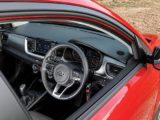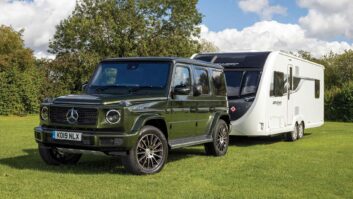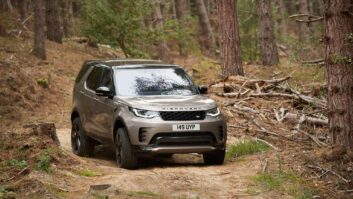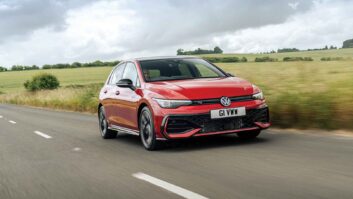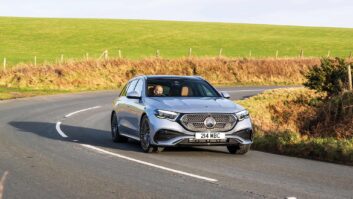It would be tempting to think of the Kia Stonic as the middle sibling in the brand’s SUV range – neither as beloved as the first-born nor as adored as the baby of the family.
But while it risks a life of anonymity, the Stonic is actually good enough to stand on its own merits, and that still holds true if you drive a (lightweight) tow car.
What’s it like inside?
The Kia Stonic is based on the company’s Rio supermini, so you shouldn’t consider it if you are going to need loads of cabin and boot space. If you tour with teens, perhaps you’re best looking elsewhere.
Nevertheless, it’s fine if all you need is a car for two main users and light towing duties. There’s a good amount of space for the two front-seat occupants, and it’s easy to find a comfortable driving position, even if you’re tall.
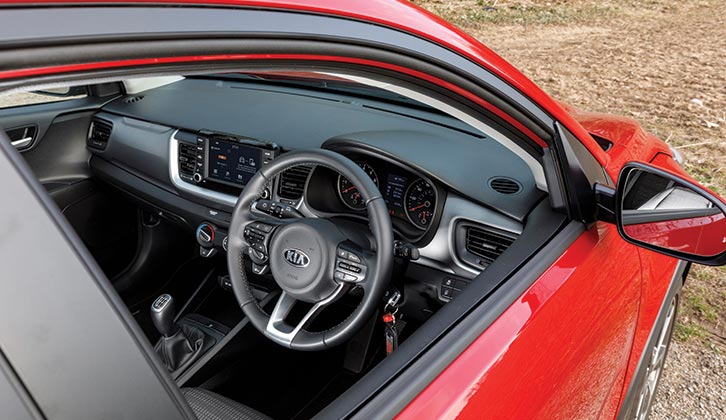
However, things aren’t as good in the back seat, where legroom is in noticeably short supply. Those teenagers will be asking “Are we there yet?” before you’ve got to the end of the street.
The boot space isn’t huge, either. The 352-litre area is quite a bit smaller than you’ll find in a Nissan Juke (422 litres), and you’ll need a model in top-spec 4 trim to get an adjustable boot floor.
For a car that looks purposeful on the outside, the interior is somewhat more run-of-the-mill. There’s no denying that everything feels nicely put together, but it’s all a bit dark and moody, and largely devoid of stylistic highlights. Still, there’s a fair amount of standard kit, including a 7.0-inch touchscreen with Apple CarPlay and Android Auto, and air conditioning.
Climate control, a reversing camera and sat nav feature on 3-trimmed cars, while 4 models have keyless entry, heated front seats and leather trim.
How does it drive?
Originally, there were three engines: the 1.4-litre naturally aspirated petrol, 1.0-litre turbocharged petrol and 1.6-litre diesel. The 1.4 petrol (slow) and 1.6 diesel (noisy) were dropped, leaving the entertaining 1.0 turbo. At the same time, the 1.0 gained 48V mild-hybrid assistance.
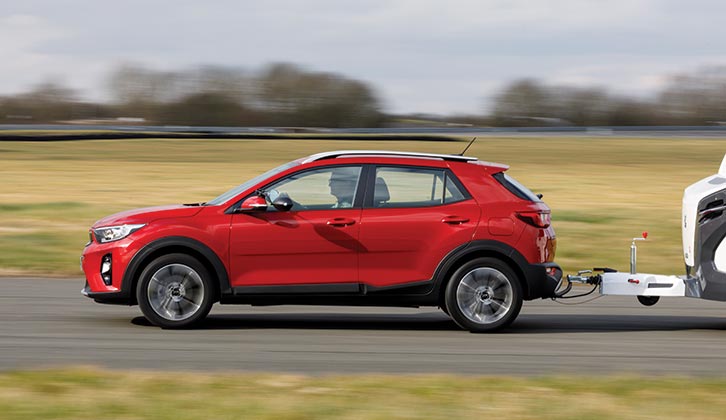
It’s punchy, and its willingness to rev means this is a fun companion. It sounds good, too, although that makes the road noise all the more annoying.
The Kia is inoffensive to drive, with light steering that is accurate at speed and easy to twirl when parking. The ride is firm, so the body control is good. Anything you tow will have to be light, as the Stonic has an 85% match figure of 1007kg. It’s also quite pedestrian, although it is stable.
Verdict
The Kia Stonic is worth a look if it’s just you and a partner, and you have a light caravan. In that case, you’ll be getting a well-made and efficient tow car that will be stable and reliable. Further reassurance is provided by Kia’s seven-year warranty. However, anyone touring with children will be better off looking elsewhere.
Take a look at our guide to the best caravan tow cars to see our current top picks
Need to know
What to pay
- High: Price: £22,995; Model: 2021 1.0 T-GDI MHEV GT Line; Miles: 9000
- Sweet spot: Price: £13,000; Model: 2019 1.0 T-GDI 3; Miles 34,000
- Low: Price: £8999; Model: 2017 1.0 T-GDI First Edition; Miles: 119,000
What will it tow?
- Kerbweight: 1185kg
- Towing limit: 1110kg
- Noseweight limit: 75kg
- 85% match: 1007kg
- Running costs: 1.0 T-GDI 3
- Insurance group: 11
- Annual VED: £165
- Average economy: 51.4mpg
- Interim/full service: £97/£145
- (Servicing prices supplied by Servicing Stop, 0844 324 5262)
Trouble spots
Like hens’ teeth… that’s the Kia Stonic. It’s exceptionally rare – not in the sense of how many have been sold, but in the fact that it’s one of those very few cars that have never been the subject of a recall.
Reports of issues with the Stonic are uncommon, but can concern an overenthusiastic tyre pressure monitoring system, and a fault with the stop-start system. However, a software update come service time will usually sort these out.
- After some more towing inspiration? Then take a look at our guide to the best small tow cars
Or you could try:
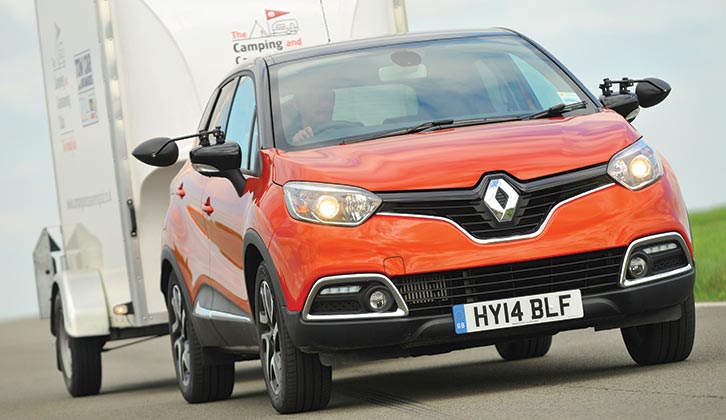
Renault Captur
The Captur is a funky-looking small SUV that’s based on the company’s Clio supermini. The 1.5-litre diesel is a smooth and punchy engine that suits the car when towing, although
the Captur has only ever had front-wheel drive, so might struggle on slippery surfaces. Cabin space is fine for four, and the flexibility is enhanced by the sliding rear seat, so you can prioritise passengers or luggage as necessary.
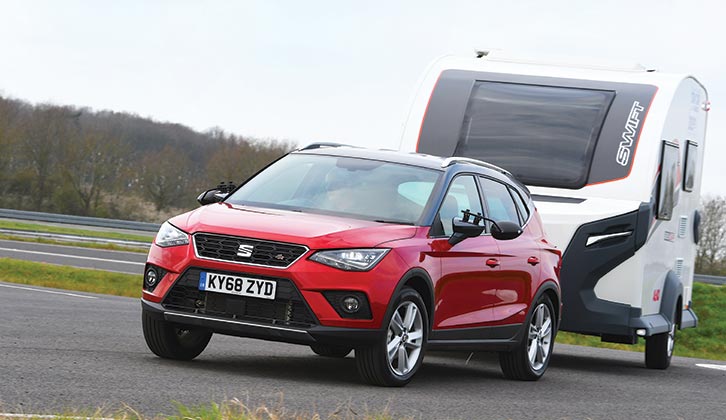
Seat Arona
The Arona is a small SUV that really does it all. It’s good to drive, and has plenty of cabin and boot space. Better still, all models are fitted with a height-adjustable boot floor. There’s a vast range of engines, many of which are available with a seven-speed DSG automatic gearbox, which will make towing even easier. Better still, every Arona will do north of 50mpg, which has to help these days.
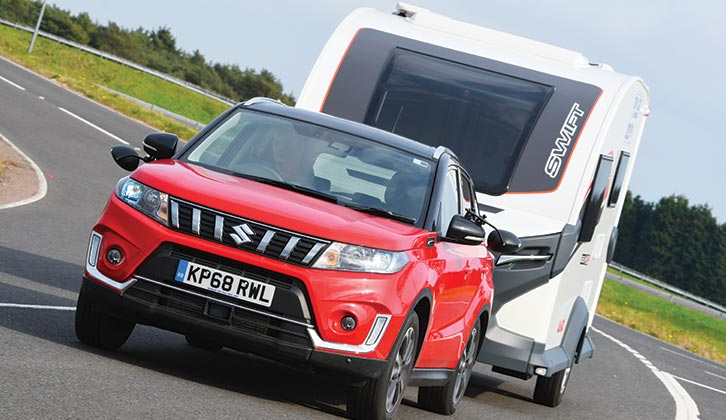
Suzuki Vitara
The Vitara is a rugged SUV that lives up to its looks. That’s because it had the option of four-wheel drive, so it is very capable towing on slippery surfaces. There’s plenty of space inside and everything feels well put together, although the plastics seem to have been chosen more for their ruggedness than their style. No matter which version you buy, it will have kit including air-con, cruise control and DAB radio.
If you’ve enjoyed reading this article, why not get the latest news, reviews and features delivered direct to your door or inbox every month. Take advantage of our brilliant Practical Caravan magazine SUBSCRIBERS’ OFFER and SIGN UP TO OUR NEWSLETTER for regular weekly updates on all things caravan related.




